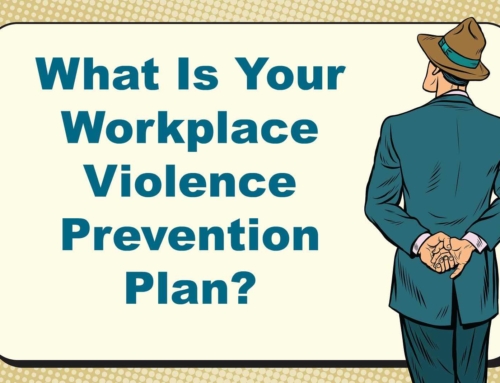Workplace Violence in the UK: Why We Should Care This Time!
The latest statistics (for 2013/4) have recently been released by the Health and Safety Executive (HSE) in the United Kingdom as part of their ongoing mission and responsibility for developing and implementing National policies on the reduction of work-related violence in the United Kingdom.
The figures come from the 2013/14 Crime Survey for England and Wales (CSEW).
The highlights of the report are these:
- In 2013/14, the survey estimated 257,000 adults experienced work related violence including threats and physical assaults.
- There were an estimated 583,000 incidents of violence at work according to the 2013/14 CSEW, comprising of 269,000 assaults and 314,000 threats.
- The 2013/14 CSEW estimated that 1.0% of women and 1.2% of men were victims of violence at work once or more during the year prior to their interview.
- It is estimated that 56% of victims reported one incident of work related violence while 17% experienced two incidents of work related violence and 27% experienced three or more incidents.
- Strangers were the offenders in 56% of the reported incidents of workplace violence.
- Among the 44% of incidents where the offender was known, the offenders were most likely to be clients or a member of the public known through work.
- The survey found 72% per cent of violence at work resulted in no physical injury. Of the remaining 28% of cases, minor bruising or a black eye accounted for the majority of the injuries recorded.
- In 2013/14 there were 4,936 RIDDOR reports of injuries to employees involving acts of violence in Great Britain (1 fatality, 866 major or specified injuries, and 4,069 over-7-day injuries).
I wanted to spend a little time drawing your attention to this last statistic, because it is significant for a number of reasons.
What is the RIDDOR report?
RIDDOR stands for Reporting of Injuries, Diseases and Dangerous Occurrences Regulations 2013 and came into effect on October 1st 2013 throughout the UK. It was created to a make significant change to the existing reporting requirements for certain types of incidents that occur in the workplace and which results in a significant injury to the worker.
Under this legislation, employers are mandated to report work-related accidents which cause death, work-related accidents which cause certain serious injuries (reportable injuries), diagnosed cases of certain industrial diseases and certain ‘dangerous occurrences’ (incidents with the potential to cause harm).
The reporting of the incident not only informs the regulatory authorities (mainly the HSE) about deaths, injuries, occupational diseases and dangerous occurrences but they can then identify where and how risks arise, and whether they need to be investigated. It also helps the HSE to target their work and provide advice about how to avoid work-related deaths, injuries, ill health and accidental loss.
The number of RIDDOR reported injuries due to Workplace Violence incidents (4,936 in 2013/4) which are incidents involving are staggering. This is particularly so when you learn that the reportable injuries (including death) have to fit into the following criteria:
- a fracture, other than to fingers, thumbs and toes
- amputation of an arm, hand, finger, thumb, leg, foot or toe
- permanent loss of sight or reduction of sight
- crush injuries leading to internal organ damage
- serious burns (covering more than 10% of the body, or damaging the eyes, respiratory system or other vital organs)
- scalpings (separation of skin from the head) which require hospital treatment
- unconsciousness caused by head injury or asphyxia
- any other injury arising from working in an enclosed space, which leads to hypothermia, heat-induced illness or requires resuscitation or admittance to hospital for more than 24 hours
These awful statistics are there for us all to see as a result of the new RIDDOR legislation requiring employer reporting.
What About the Self-Reporting Version?
When we look at the self-reporting version, we see a slightly different result.
The Crime Survey for England and Wales (CSEW) has run annually since 1982 and is a large, nationally representative, household survey. The main purpose of the survey is to measure the extent and nature of criminal victimization against adults, aged 16 or over, living in private households in England and Wales.
The CSEW can be accessed here
Canada has a similar survey. It is called the General Social Survey on Victimization and was last conducted in 2004.
At that time, the incidents—including sexual assault, robbery and physical assault—added up to 356,000 violent workplace incidents across the country.
What is crystal clear to me from these statistics is that there remains a vast amount of workplace violence incidents which occur but are UNREPORTED TO THE AUTHORITIES.
Reporting is Mandatory!
Until we create an atmosphere where reporting becomes mandatory (such as the injury categories required by RIDDOR 2013) we will never really know the extent of the problem. Until we know the true extent of the problem, that is the only way that we can MANAGE OUR RISK.
By the way, to add perspective to the dialogue, in 2013 the United States Bureau of Labour Statistics reported that there were 753 homicides that occurred as a result of Workplace Violence incidents.







Leave A Comment